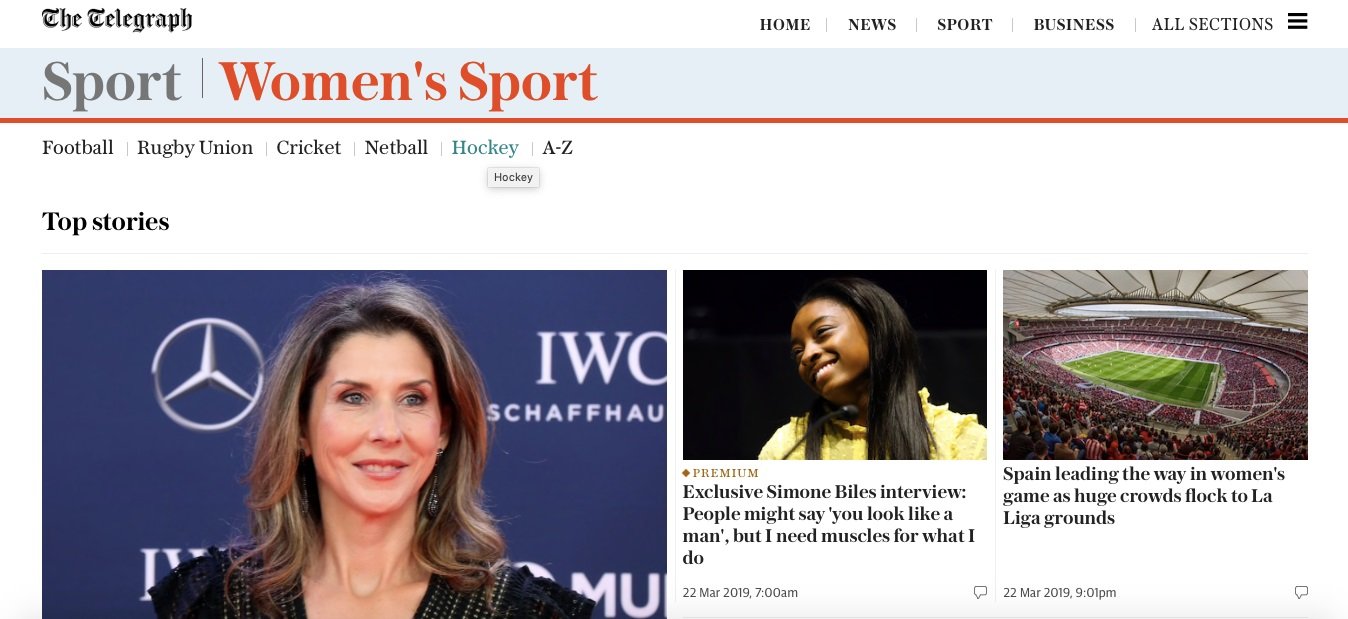Is women's sport finally getting the recognition it deserves?
This week has the potential to be a defining moment for the future of women’s sport in the UK.
On Monday, The Telegraph launched its new Women’s Sport initiative, introduced ‘to transform the profile of women’s sport and its visibility in the media’.
This was followed by Barclays announcing it would be pumping millions of pounds in the development of the women’s game, making it the largest ever investment in UK women’s sport by any brand.
Two of the major challenges that women’s sport has faced in recent years have been the lack of media coverage and lack of substantial investment from sponsors.
It is another hugely positive step on the road to gender equality in sport and will undoubtedly help promote female athletes as role models in this country.
So, how far has women’s sport come over the past few years, and what more must be done to help maintain and increase its growth in 2019 and beyond?
There is only one place to start when looking at the promotion of female sport; the This Girl Can campaign developed by Sport England in 2015.
The nationwide initiative was designed with the mission of getting women and girls moving, regardless of shape, size or ability.
Within a year, Sport England announced that 2.8 million 14-40 year-old women had been active as a result of the campaign.
Four years on from the release of the original advertisement, women’s sport has also seen significant growth at an elite level, with a large increase in coverage across traditional and digital media.
It was revealed this week that a record nine countries have informed Fifa that they are interested in hosting the 2023 Women’s Football World Cup.
That followed last Sunday’s Liga Femenina Iberdrola match between Atletico Madrid and Barcelona that set a new world record attendance for a club match in women’s football of 60,739.
It is not just football either, jockey Bryony Frost stole the show at this year’s Cheltenham Festival by becoming the first woman to ride a grade one winner at the event, an achievement that had huge significance even for people outside of horse racing.
In Rugby, England’s Red Roses set a new record attendance in their Six Nations triumph over Italy in Exeter, before breaking the record for a women’s attendance at Twickenham a week later as they secured the Grand Slam.
Despite their convincing triumph, the England players did not receive a bonus for winning the Grand Slam, with their male counterparts standing to win up to £160,000 each had they achieved the equivalent.
Golf has faced its fair share of challenges in recent times, with the venue for the 2020 Tokyo Olympic Games only last year lifting its ban on female members.
Next month sees the introduction of a women's amateur tournament at Augusta National for the first time, but there is still a lot of work to be done.
Hockey and netball have been shining examples of governing bodies using success at major Olympic and Commonwealth Games to increase participation and grow audiences for the sport.
Broadcast coverage of the sports on BT Sport and Sky Sports respectively has been very successful, but both could undoubtedly benefit from games being shown on free-to-air television.
Tennis has often been an industry leader at providing equality, with the US Open offering equal prize money in 1973, and Wimbledon becoming the last major to achieve pay parity in 2007.
However, that did not come without its struggles, and 23-time major winner Serena Williams was one of those forced to campaign vociferously for equality.
Even with major tournaments offering equal sums, recent figures showed that more than 70 per cent of men in the world’s top 200 earned more than their female counterparts in 2018.
The Telegraph’s new initiative is a watershed moment for women’s sport and should encourage other news outlets searching for ways in which they can increase their own output.
The media have a responsibility to showcase female sport in a positive light to ensure that there are more opportunities for the next generation of aspiring female athletes.
One of the criticisms aimed at coverage of women’s sport in the past is that the focus has been on femininity and attractiveness, as opposed to athleticism and ability.
A study in 2017 revealed that coverage of women’s sports on television was sexist, dull and lacklustre, with broadcasters subtly sending viewers the message that women’s sports lack the excitement and interest of men’s sports.
Thankfully the tone of coverage does now seem to be changing, but as well as the media, there is work to be done from clubs, competition organisers and governing bodies.
The landscape is also finally shifting when it comes to female pundits commenting on high-profile male competitions.
The BBC’s Vikki Sparks became the first woman to commentate on a men’s World Cup game for British TV last year and ex-footballer Alex Scott has earned high praise for her excellent punditry this season.
Research in 2018 showed that 84 per cent of general sports fans had an interest in women’s sport, so it is about finding a way to engage with that large potential audience.
The survey showed that interest levels were higher in sports where men's and women's events are staged together – such as athletics or tennis – and while that is not always possible, it is something that other sports should consider.
The Barclays deal sponsoring the FAWSL is certainly a landmark moment and reflects the increase in coverage and the opportunities that brands now realise have always existed to tap into female audiences.
The cynics will remain, taking to social media to announce their displeasure at the sight of women achieving sporting success, but the trolls will not prevail.
Women’s sport is in a better place than ever and the role models of tomorrow are finally starting to get the recognition that they deserve.

